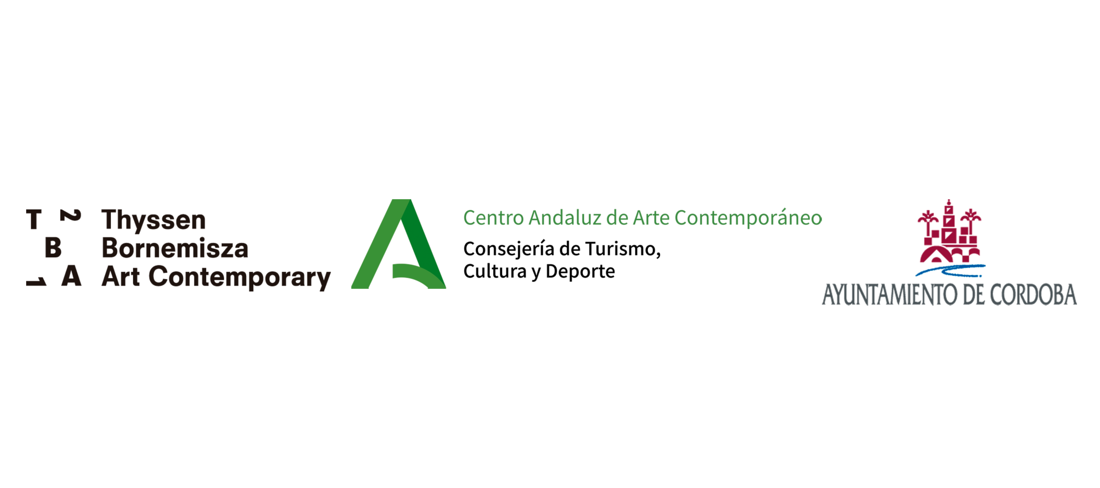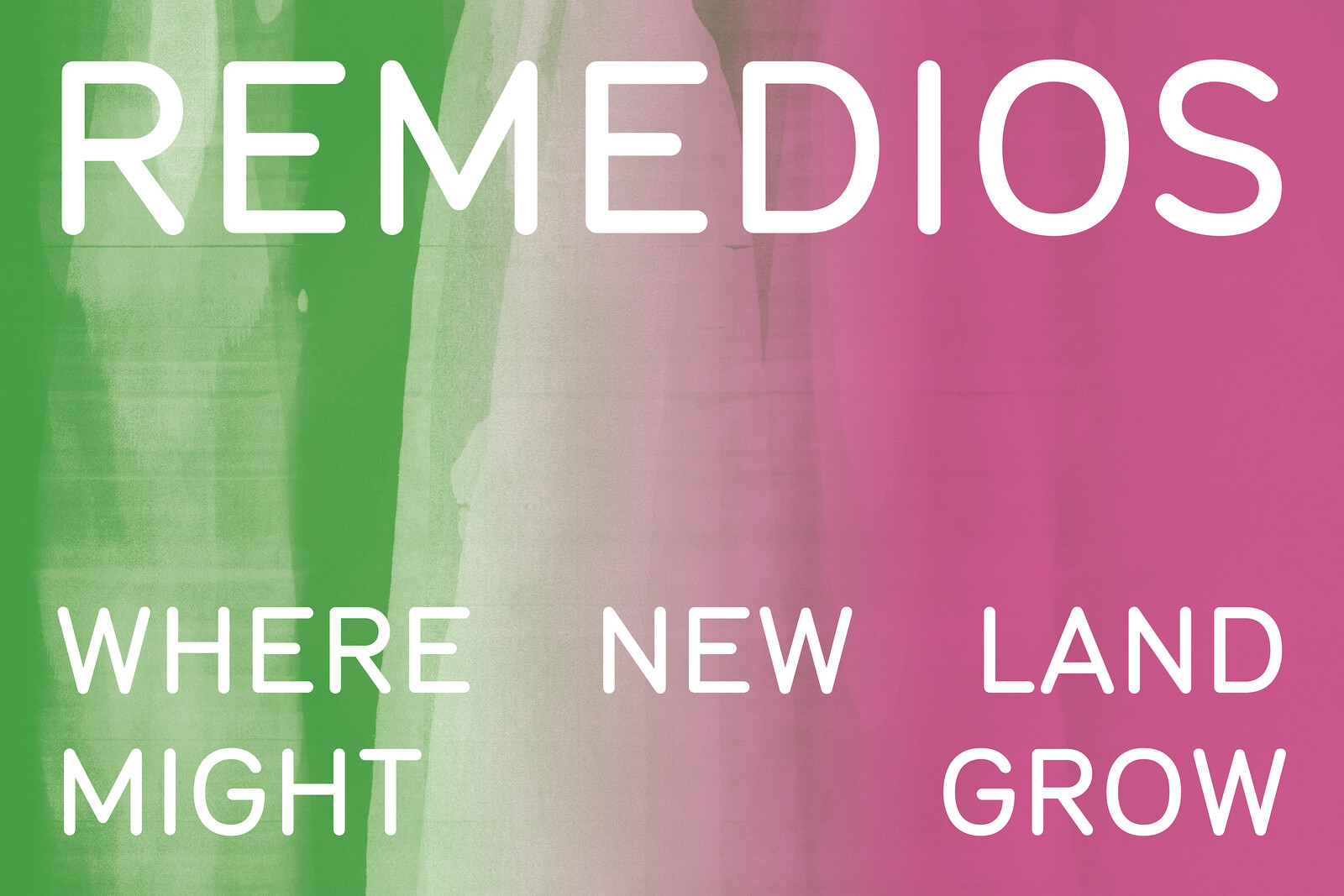April 14, 2023–March 31, 2024
Carmen Olmedo Checa
14009 Córdoba
Spain
+ + + We abrade + + unbraid + +
repeat ourselves + as crystal lattice + + +
We make soil + +
then mud + where we laid
+ + alchemy + of our wet skinz + and gravity + +
an origin + + where new land might grow + + +
—Natalie Diaz
Curated by Daniela Zyman.
Remedios: Where new land might grow is a multi-perspectival exploration of practices of healing, repair, reparation, remediation, and restitution in the TBA21 Collection. Featuring contributions from over forty artists—including Amazonian, Pacific, indigenous American, African-diasporic, and European perspectives—Remedios invites its public to engage with works of art for solace, respite, and replenishment while responding to the growing desire to change the contemporary world. Contributing tools, ideas, and artistic interrogations dedicated to the (re-)generative capacities of repair, the exhibition becomes a space of encounter providing a pedagogy of learning to live with brokenness and vulnerability in troubling times.
For some artists, healing begins with ceremonial practices; the purification of the spirit; the cadences of the body; or the curative articulations of language, sacred shapes, materials, and symbols. Other artists direct their care to the land, the environment, and the collective intelligence of their respective communities. Still others attend to the reparation of scars and traumas resulting from past injuries and present anxieties. Through all these different registers, repair is work and labor, performed and actualized in the here and now, not an abstract utopia.
Contributions to the exhibition consists of works such as a large assembly and ritual tent, a kupixawa, by the Amerindian Huni Kuin in collaboration with Brazilian artist Ernesto Neto; a mothership dreamcatcher by the indigenous American artist Brad Kahlhamer; and a filmic installation by Courtney Desiree Morris, which awakens the caminos of the African diasporic Orisha (deity) Yemaya, rooted in Santería, an Afro-Caribbean religion brought to the Americas by enslaved Africans. These works lay out a critical trajectory connecting the wisdom of ancestors to the present time. They are a curative and a source of strength and replenishment in the face of collective anxiety triggered by the profound transformation of ecological, political, and economic relations.
For the French-Algerian artist Kader Attia showing the wounds and repairing them with visible staples is both a testimony to their existence and a gesture toward completing the unfinished, and often denied, work of healing. While the wounds may have been inflicted in the past, “the past lives in the same wounds that remain open in the present,” as Sara Ahmed writes. Against the longstanding indifference of states and institutions, healing and restitution require more than remedying losses. Healing is multi-temporal and multi-dimensional. Addressing the historical and ongoing oppression and violence enacted by the colonial world order also means devoting vast resources to communities that demand reparations. It suggests a way of working with the plurality of experiences and worldviews that simultaneously challenge, construct, and open spaces of resistance, survival, and flourishing.
In Remedios, the empowering work of repair and healing is seen as an intervention and a methodology deployed to counter the world’s destruction of life and the perpetual forces of extraction and denial. The exhibition follows the invaluable intuition and guidance of artists, embracing the anticipatory illumination of art to promote curative labor, personal healing, and social transformation. It moves us to act collectively, to feel the imperative to do so, and to strive for, following Akimel O’otham and Mojave poet Natalie Diaz, “an origin + + where new land might grow + + +.”
Remedios presents works from the TBA21 Collection, including artists Marina Abramović, Kader Attia, Cecilia Bengolea, Gabriel Chaile, José Covo, Abraham Cruzvillegas, Natalie Diaz, Olafur Eliasson, Noa Eshkol, Guo Fengyi, Newell Harry, Brad Kahlhamer, Sharon Lockhart, Thiago Martins de Melo, Asunción Molinos Gordo, Courtney Desiree Morris, Eduardo Navarro, Shirin Neshat, Ernesto Neto and the Huni Kuin, Xiomara de Oliver, Daniel Otero Torres, Mònica Planes, PLATA with Víctor Barrios, Nohemí Pérez, Belén Rodríguez, Sandra Vásquez de la Horra, Klaus Weber, and Francesca Woodman, amongst others.
Opening program
Friday, April 15
7pm Remedios: Where new land might grow—Opening
8pm + + DREAM BONES + + BOWERY NATION + +
Musical and poetic performance by Brad Kahlhamer with David Caro Torralba and Patricia Rezai
Saturday, April 15
12pm Meet the Artists
With Courtney Desiree Morris, Brad Kahlhamer, Newell Harry, Mònica Planes, PLATA, and Sandra Vásquez de la Horra, moderated by Daniela Zyman
5pm Bendición—A ritual performance offering
Procession by Courtney Desiree Morris with Martin Perna, Helena Martos, Antonio L. Pedraza and Coro Brouwer
About TBA21
TBA21 Thyssen-Bornemisza Art Contemporary is a leading international art and advocacy foundation created in 2002 by the philanthropist and collector Francesca Thyssen-Bornemisza, representing the fourth generation of the Thyssen family’s commitment to the arts and public service. TBA21—based in Madrid, with situated projects in Venice and Córdoba—stewards the TBA21 Collection and its outreach activities, which include exhibitions, educational offers, and public programming. TBA21–Academy is the foundation’s research center, fostering a deeper relationship to the Ocean and other bodies of water by working as an incubator for collaborative inquiry, artistic production, and environmental advocacy. For more than a decade, the Academy has catalyzed new forms of knowledge emerging from the exchanges between art, science, policy, and conservation in long-term and collaborative engagement through fellowships and residency programs. All activity at TBA21 is fundamentally driven by artists and the belief in art and culture as a carrier of social and environmental transformation.






